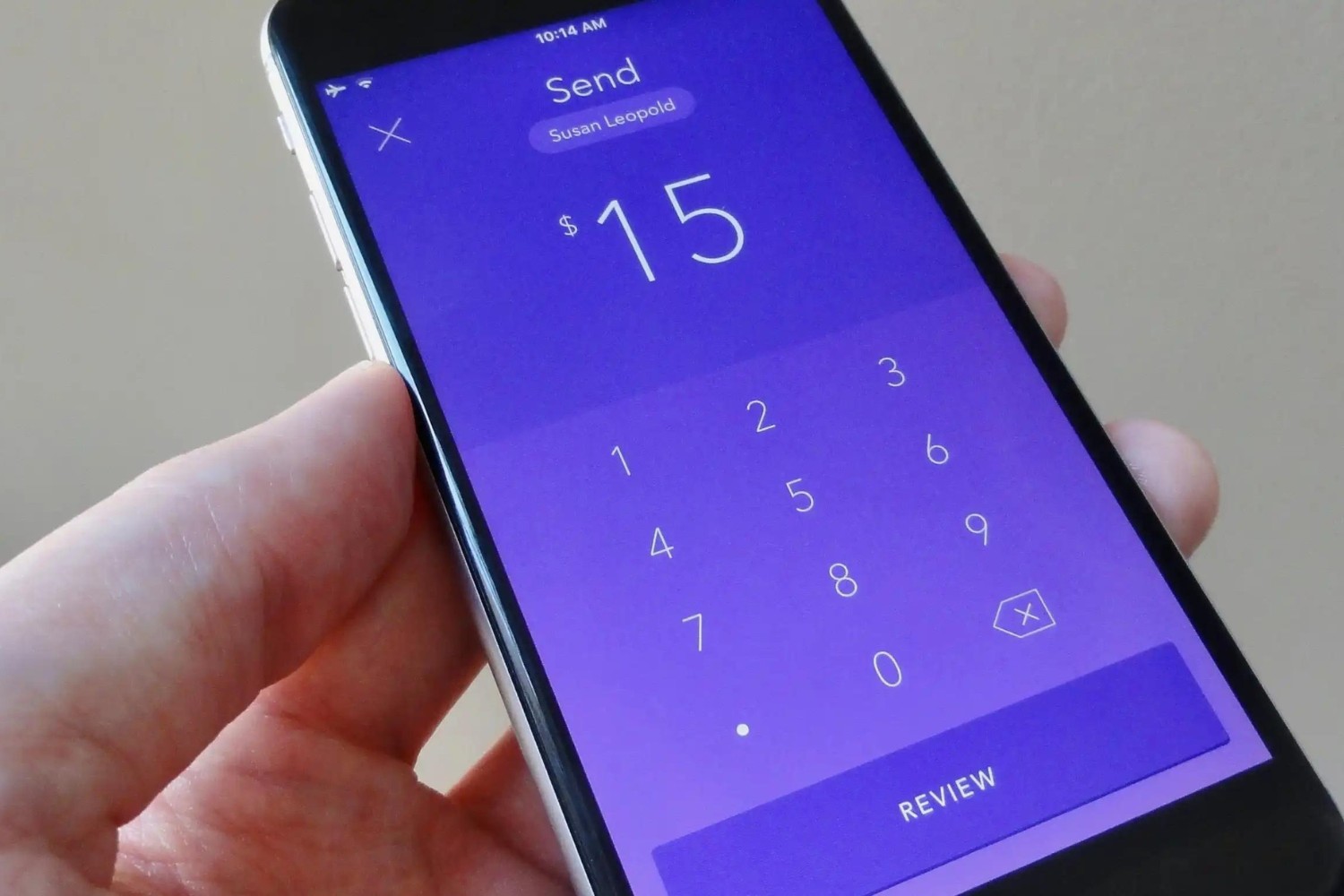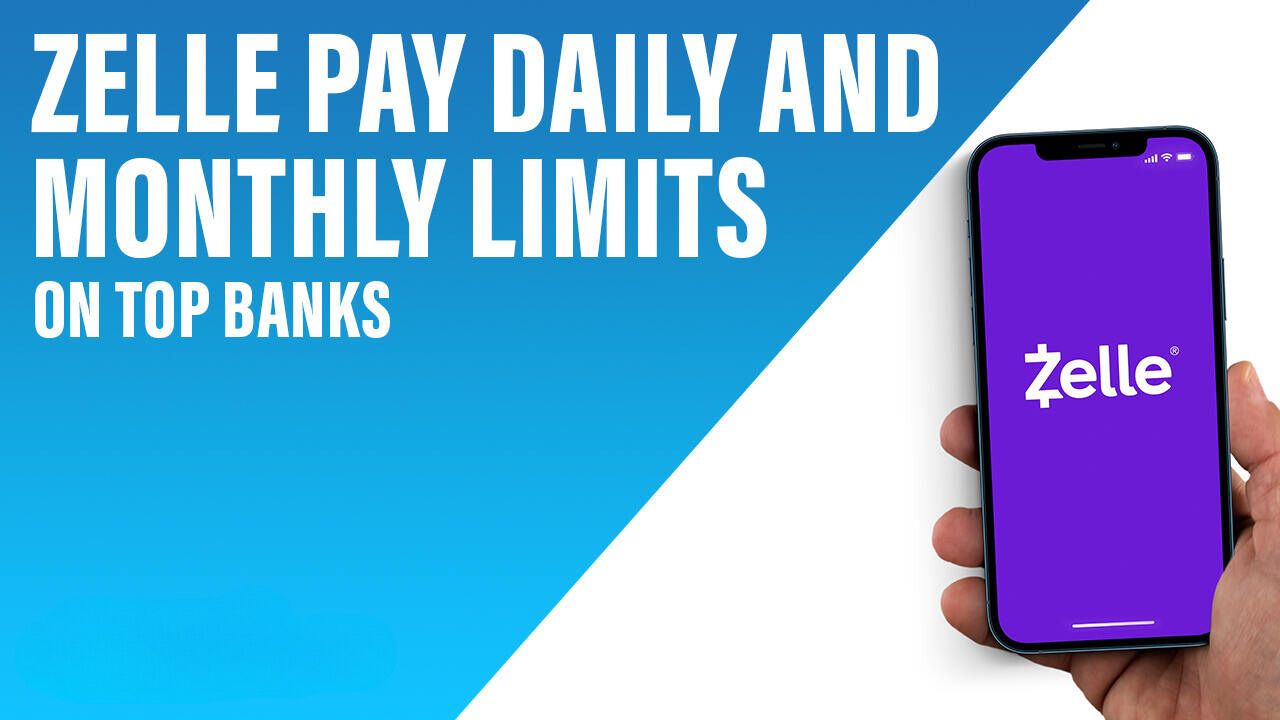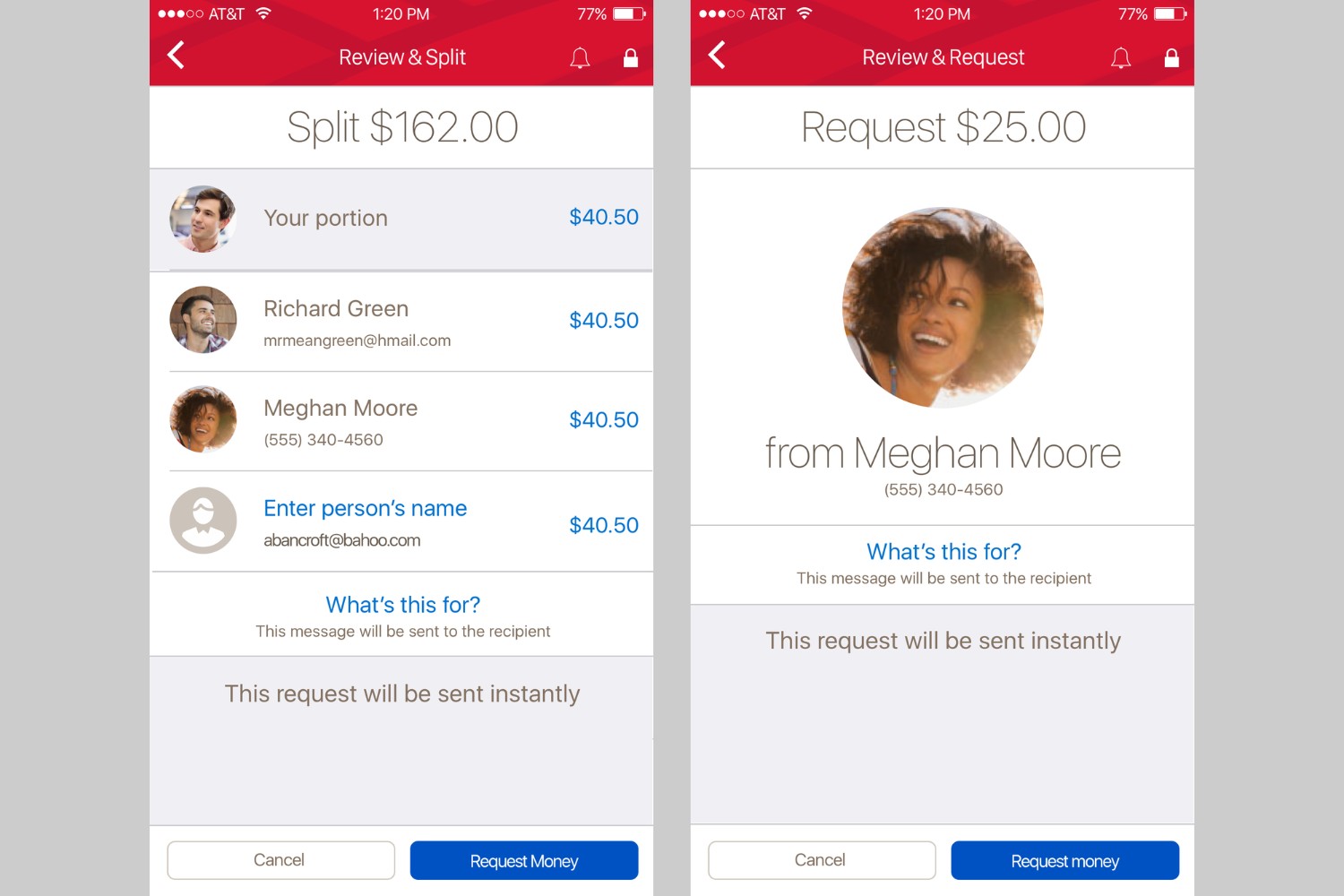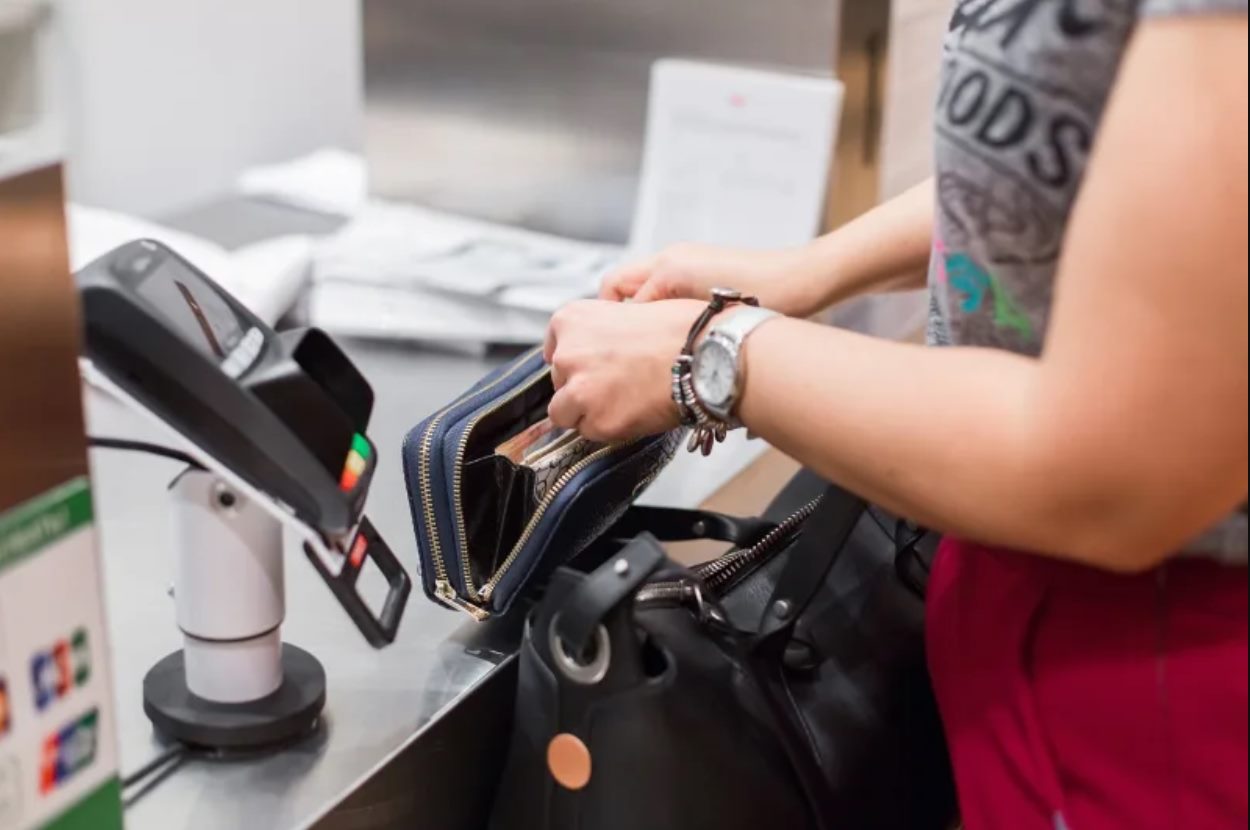Introduction
Welcome to the world of online banking, where the convenience of digital transactions has become the norm. Whether you need to pay bills, transfer funds, or make purchases, transferring money between banks has never been easier. However, you may have noticed that there are certain limitations when it comes to transferring money on a daily basis. This is known as the daily money transfer limit. In this article, we will explore what the daily money transfer limit is, why it exists, how it works, and how you can manage it effectively.
The daily money transfer limit is the maximum amount of money that you can transfer between banks in a single day. It is put in place by financial institutions to ensure the security of your account and to prevent fraudulent activities. This limit applies to various types of transactions, including online transfers, wire transfers, and even cash deposits or withdrawals made at the bank counter.
Financial institutions set daily money transfer limits to protect their customers from unauthorized access to their accounts. By having a limit in place, banks can minimize the risk of potential losses due to fraud or errors. Additionally, the daily limit also helps to prevent money laundering and other illegal activities by keeping track of large transactions and ensuring the funds are legitimate.
Let’s dive deeper into how the daily money transfer limit works. When you initiate a money transfer, the bank’s system will check if the amount exceeds the daily limit. If it does, the transfer will be declined, and you will need to either reduce the amount or wait until the next day to complete the transaction. However, if the transfer amount falls within the daily limit, your transaction will proceed as usual.
It’s important to note that the daily money transfer limit is not a fixed amount for all customers. Each bank sets its own limit, which can vary based on several factors. These factors can include your account type, your banking relationship, and even the platform or method used for the transaction. Therefore, it’s crucial to know your specific daily money transfer limit to avoid any inconveniences or delays in your financial transactions.
In the following sections, we will explore in detail how the daily money transfer limit is set, how it is calculated, what happens if you exceed the limit, and whether you have the ability to change or increase your daily money transfer limit. Furthermore, we will also provide tips for effectively managing your daily money transfer limits, ensuring that you can make the most of your banking experience.
What is a Daily Money Transfer Limit?
A Daily Money Transfer Limit refers to the maximum amount of money that you can transfer between banks in a single day. This limit is imposed by financial institutions to ensure the security of your account and to prevent fraudulent activities. It applies to various types of transactions, including online transfers, wire transfers, and even cash deposits or withdrawals made at the bank counter.
The Daily Money Transfer Limit acts as a safeguard, protecting your account from unauthorized access and potential losses. By setting a limit, banks can minimize the risk of fraudulent transactions and errors. It also helps in combating money laundering and other illegal activities by monitoring and validating the authenticity of large transfers.
Financial institutions have the authority to set their own Daily Money Transfer Limits, which can vary from bank to bank. The limit may also differ based on factors such as your account type, level of banking relationship, and the specific platform or method you use for the transaction.
For individual customers, the Daily Money Transfer Limit can range from a few hundred dollars to several thousand dollars, while for businesses and high-net-worth individuals, it can be significantly higher. Some banks may have lower limits initially for new customers, which can be increased over time as the banking relationship strengthens.
It’s important to understand and adhere to your bank’s Daily Money Transfer Limit to avoid any inconvenience or disruption in your financial transactions. Exceeding the limit may result in the transaction being declined, and you may need to either reduce the transfer amount or wait until the next day to initiate the transaction.
Now that we have a clear understanding of what a Daily Money Transfer Limit is, let’s explore the reasons behind its existence and why it is a crucial component of the banking system.
Why Are There Daily Money Transfer Limits?
There are several reasons why financial institutions implement Daily Money Transfer Limits:
- Security: The primary reason for having a Daily Money Transfer Limit is to protect your account from unauthorized access and potential losses. By setting a limit on daily transfers, banks can mitigate the risk of fraudulent transactions and minimize the impact of any security breaches. It acts as a safeguard to ensure that only authorized individuals have the ability to transfer funds.
- Fraud Prevention: Daily Money Transfer Limits serve as an effective measure to combat financial fraud. By monitoring and controlling the amount of money that can be transferred in a single day, banks can detect and prevent potential fraudulent activities. This includes identity theft, unauthorized access, and unauthorized transactions. The limit helps in verifying the authenticity of transactions and ensures that the funds being transferred belong to the account holder.
- Money Laundering and Illegal Activities: Financial institutions have a legal obligation to prevent money laundering and other illegal activities. Daily Money Transfer Limits play a crucial role in this regard by monitoring large transfers and tracking the source of funds. By imposing limits, banks can effectively identify suspicious transactions and report them to the appropriate authorities. This helps in maintaining the integrity of the financial system and preventing criminal activities.
- Operational Efficiency: Banks handle a large volume of transactions on a daily basis. By implementing Daily Money Transfer Limits, banks can manage their operational processes more efficiently. It allows them to prioritize and process transfers in a timely manner, ensuring that all transactions are executed smoothly. Without limits, the sheer volume of transfers could overwhelm the system, leading to delays, errors, and potential disruptions in the banking operations.
Overall, Daily Money Transfer Limits are put in place to protect you, the account holder, and the financial institution. They help maintain the security and integrity of the banking system, prevent fraudulent activities, and adhere to regulatory requirements. Understanding the importance of these limits can help you manage your finances effectively and ensure a secure banking experience.
How Does the Daily Money Transfer Limit Work?
The Daily Money Transfer Limit works as a threshold that determines the maximum amount of money you can transfer between banks in a single day. It is a security measure implemented by financial institutions to protect your account and prevent fraudulent activities.
When you initiate a money transfer, whether it’s an online transfer, wire transfer, or cash deposit/withdrawal at the bank counter, the bank’s system checks if the transfer amount exceeds your Daily Money Transfer Limit. If the amount is within the limit, the transaction will proceed as usual. However, if the transfer amount exceeds the limit, the transaction will be declined, and you will need to either reduce the amount or wait until the next day to complete the transaction.
The Daily Money Transfer Limit is typically set by the financial institution and can vary based on several factors. These factors may include your account type, level of banking relationship, and the specific platform or method used for the transaction. It’s important to note that different banks may have different limits, so it’s essential to be aware of your specific limit.
For example, let’s say your Daily Money Transfer Limit is set at $5,000. If you initiate an online transfer of $3,000, it will go through without any issues. However, if you attempt to transfer $7,000, the system will decline the transaction due to exceeding the daily limit.
It’s important to manage your daily transfers within the set limits to avoid any inconvenience or delays. If you frequently find yourself exceeding the limit, you may need to consider other transfer methods or contact your bank to discuss the possibility of increasing your Daily Money Transfer Limit.
It’s worth noting that the Daily Money Transfer Limit is not to be confused with other limits or fees that may be associated with specific types of transactions, such as international wire transfers or large cash withdrawals. These limits may have their own rules and restrictions, which should be taken into account when conducting such transactions.
By understanding how the Daily Money Transfer Limit works and managing your transfers accordingly, you can ensure smooth and secure financial transactions within the set limits imposed by your financial institution.
How is the Daily Money Transfer Limit Set?
The Daily Money Transfer Limit is determined by each financial institution and can vary from bank to bank. Several factors come into play when setting the limit:
- Account Type: The type of account you hold with the bank can influence the Daily Money Transfer Limit. Different account types, such as personal checking accounts, savings accounts, or business accounts, may have different limits based on the bank’s policies and the level of risk associated with each account type.
- Banking Relationship: Your banking history and relationship with the financial institution can also impact the Daily Money Transfer Limit. Long-standing customers who have maintained a good track record with the bank may be eligible for higher limits compared to new customers or those with a history of irregularities.
- Transaction Method: The specific platform or method used for the transfer can also affect the Daily Money Transfer Limit. Different methods, such as online transfers, wire transfers, or cash deposits/withdrawals at the bank counter, may have varying limits to ensure the security and efficiency of each transaction method.
- Regulatory Requirements: Financial institutions must adhere to certain regulatory guidelines and risk management protocols. These regulations may influence the limits imposed to ensure compliance with anti-money laundering laws, restrictions on high-risk transactions, and other regulatory requirements set by the governing authorities.
- Risk Assessment: Financial institutions employ risk assessment models to evaluate and manage the risk associated with each customer and transaction. These assessments help determine the appropriate Daily Money Transfer Limit based on factors such as the customer’s financial standing, transaction history, and the potential risk involved.
It’s important to keep in mind that Daily Money Transfer Limits can be subject to change. Banks may periodically review and adjust the limits based on factors such as changing regulatory requirements, the customer’s banking relationship, or internal risk management strategies. Therefore, it’s always a good practice to stay updated with your bank’s current limit and any changes that may occur.
If you feel that your Daily Money Transfer Limit is too restrictive for your needs, you can reach out to your bank to discuss the possibility of increasing the limit. The bank may require additional documentation or evaluate your account history to determine if an increase is feasible.
Being aware of how the Daily Money Transfer Limit is set and understanding the factors that influence it can help you better manage your transactions and ensure a smooth banking experience within the prescribed limits of your financial institution.
How is the Daily Money Transfer Limit Calculated?
The calculation of the Daily Money Transfer Limit varies from bank to bank and can depend on several factors. While the exact formulas and algorithms used by each financial institution may differ, here are some common considerations taken into account when calculating the limit:
- Account Type: The type of account you hold, such as a personal checking account or business account, is a significant factor in calculating the Daily Money Transfer Limit. Different account types may have different limits based on the risk associated with each account type.
- Banking Activity: The bank looks at your historical banking activity, including the average balances in your account, the frequency of deposits and withdrawals, and the types of transactions you regularly perform. This information helps the bank assess your financial standing and determine an appropriate Daily Money Transfer Limit.
- Creditworthiness: Your creditworthiness and credit history may also be considered when calculating the Daily Money Transfer Limit. Banks may take into account factors such as your credit score, loan repayment history, and overall financial stability to assess the risk associated with granting higher transfer limits.
- Income and Financial Status: Your income level and overall financial status can influence the Daily Money Transfer Limit. The bank may consider your reported income, employment status, and other financial information to gauge your financial capacity and determine the appropriate limit for your account.
- Regulatory Requirements: Financial institutions must comply with regulatory guidelines and anti-money laundering laws. These requirements can impact the calculation of the Daily Money Transfer Limit. Banks may set limits that align with these regulations to prevent unauthorized activities and ensure compliance.
It’s important to note that the calculation of the Daily Money Transfer Limit is usually done internally by the bank’s systems or risk management departments. As a customer, you may not have direct control over how the calculation is performed. However, you can keep track of your account activity, maintain good financial standing, and communicate with your bank if you feel that the calculated limit does not align with your needs.
Ultimately, the goal of the calculation is to set a Daily Money Transfer Limit that balances security, regulatory compliance, and convenience for the customer. It allows you to transfer funds within the prescribed limits while maintaining the integrity of the banking system and ensuring the safety of your account.
What Happens if I Exceed the Daily Money Transfer Limit?
If you attempt to exceed the Daily Money Transfer Limit set by your financial institution, there are a few potential outcomes:
- Transaction Declined: The most common consequence of exceeding the Daily Money Transfer Limit is that the transaction will be declined. The bank’s system will automatically detect that the transfer amount exceeds the limit and prevent the transaction from being processed.
- Notification from the Bank: In some cases, your bank may notify you of the exceeding limit before the transaction is declined. Depending on the bank’s policies and the specific circumstances, you may receive an alert or a communication from the bank informing you that the transfer amount exceeds your limit.
- Possible Fees: Some financial institutions may charge a fee if you exceed the Daily Money Transfer Limit. These fees can vary from bank to bank, so it’s important to review your account terms and conditions or contact your bank directly to understand the potential fees that may apply.
- Options to Proceed: If you find yourself in a situation where you need to transfer an amount that exceeds your Daily Money Transfer Limit, you have a few options. Firstly, you can modify the transfer amount to a value within the prescribed limit. Alternatively, you can wait until the next day to initiate the transaction when the limit resets. Lastly, you can contact your bank to discuss the possibility of increasing your Daily Money Transfer Limit, although the bank may require additional documentation or assessment before granting such a request.
It’s important to remember that exceeding the Daily Money Transfer Limit is not recommended, as it can lead to transaction delays, additional fees, and potential inconveniences. The limit is in place to protect your account from unauthorized access, minimize the risk of fraudulent activities, and ensure compliance with regulatory requirements.
If you frequently find yourself needing to transfer large amounts of money, it may be beneficial to plan your transactions in advance and manage your funds accordingly to stay within the prescribed Daily Money Transfer Limit. This will help ensure a smooth and hassle-free banking experience while maintaining the security and integrity of your account.
Can I Change or Increase My Daily Money Transfer Limit?
Yes, it is possible to change or increase your Daily Money Transfer Limit, but the process may vary depending on your financial institution and their policies. Here are a few steps you can take:
- Contact Your Bank: Reach out to your bank’s customer service or visit your local branch to inquire about changing or increasing your Daily Money Transfer Limit. They will guide you through the process and provide you with the necessary information and requirements.
- Provide Documentation: The bank may require you to provide certain documentation to support your request for a limit change or increase. This documentation can include proof of income, identification documents, and other financial-related information. The specific requirements may vary, so it’s best to check with your bank beforehand.
- Account Evaluation: Your bank may evaluate your banking history, creditworthiness, and account activity to determine if you are eligible for a Daily Money Transfer Limit change or increase. They will assess various factors to ensure the risk associated with granting a higher limit is minimal.
- Review of Banking Relationship: The length and strength of your banking relationship with the institution may also play a role in the decision to change or increase your Daily Money Transfer Limit. Long-standing customers with a good track record may have a higher likelihood of having their request approved.
- Agree to Terms and Conditions: If your bank approves your request for a limit change or increase, they may require you to review and agree to any updated terms and conditions related to the revised limit. Ensure that you understand the new limits, any associated fees, and any other relevant details to avoid confusion in the future.
It’s important to note that not all banks will grant a change or increase in the Daily Money Transfer Limit. Their decision can depend on various factors, including their internal policies, risk assessment processes, and regulatory requirements.
If your bank approves your request, they will update your account settings to reflect the new Daily Money Transfer Limit. It’s crucial to confirm the change in writing or through official communication to ensure there are no misunderstandings or errors in the future.
Remember that the Daily Money Transfer Limit is set in place to protect your account’s security and prevent fraudulent activities. It’s recommended to assess your needs and determine a limit that aligns with your financial requirements while considering the overall safety of your account.
If you find that your current Daily Money Transfer Limit is too restrictive, it’s worth exploring the possibility of requesting a change or increase from your bank. However, it’s essential to consider your financial capacity and ensure that you can manage higher limits responsibly.
Are There Different Daily Money Transfer Limits for Different Types of Accounts?
Yes, there can be different Daily Money Transfer Limits for different types of accounts within a financial institution. The limits may vary based on the account type and the associated risks. Here are some common examples:
- Personal Accounts: Personal checking accounts typically have lower Daily Money Transfer Limits compared to other account types. These limits are set to protect individuals from unauthorized access and potential losses. The limits can vary depending on the bank’s policies and the individual’s banking relationship with the institution.
- Business Accounts: Business accounts, especially those with higher transaction volumes and larger financial operations, may have higher Daily Money Transfer Limits. The limits are often tailored to meet the specific needs of businesses while taking into account the risks associated with larger transfers.
- High-Net-Worth Accounts: Financial institutions may offer specialized accounts for high-net-worth individuals, such as private banking or wealth management accounts. These accounts typically come with higher Daily Money Transfer Limits to accommodate the larger-scale financial activities of high-net-worth clients.
- International Accounts: Accounts that facilitate international transactions may have different Daily Money Transfer Limits compared to domestic accounts. The limits can be influenced by various factors, including currency exchange rates, the risk associated with cross-border transfers, and compliance with international regulations.
- Online Accounts vs. Traditional Accounts: Some banks may differentiate between online accounts and traditional accounts when setting Daily Money Transfer Limits. Online accounts may have higher limits to accommodate the convenience and speed of online transactions, while traditional accounts may have lower limits due to the potential risks associated with in-person banking activities.
It’s important to review the terms and conditions of your specific account type to understand your Daily Money Transfer Limit. This information can usually be found in the account agreement or by contacting your bank directly.
Keep in mind that financial institutions may periodically review and revise their Daily Money Transfer Limits based on factors such as regulatory requirements, risk assessments, and overall market conditions. It’s always a good practice to stay updated with your bank’s policies to ensure you are aware of any changes to your Daily Money Transfer Limit.
By understanding the different Daily Money Transfer Limits for different types of accounts, you can effectively manage your financial transactions within the prescribed limits of your account and banking relationship.
How Can I Find Out My Daily Money Transfer Limit?
To find out your Daily Money Transfer Limit, you can use the following methods:
- Banking Online or Mobile App: Log in to your online banking account or mobile banking app. Look for the section that displays your account information or settings. Typically, you will find your Daily Money Transfer Limit listed under the specific account’s details.
- Bank Statements: Check your most recent bank statements. Some banks include the Daily Money Transfer Limit information on the statement. However, keep in mind that the stated limit may be a default value and not necessarily your specific limit. It’s always best to confirm with your bank directly.
- Contact Your Bank: Reach out to your bank’s customer service either by phone, email, or visiting a local branch. They will be able to provide you with precise information regarding your Daily Money Transfer Limit. Ensure you have your account details and identification handy for verification purposes.
- Bank’s Website: Visit the bank’s official website and navigate to the section related to personal banking or account information. Look for the Frequently Asked Questions (FAQs) or Support page, where you may find information about Daily Money Transfer Limits. If the information is not readily available, use the provided contact information to reach out to the bank directly.
It’s important to remember that Daily Money Transfer Limits can be subject to change. Banks may periodically review and adjust the limits based on factors such as regulatory requirements, customer history, and risk assessments. Therefore, it’s recommended to confirm your current limit with your bank rather than relying on outdated information.
Understanding your Daily Money Transfer Limit is crucial for managing your financial transactions effectively, ensuring that you stay within the prescribed limits and avoid any potential inconveniences or disruptions in your banking activities. By staying informed and aware of your specific limit, you can make confident and informed decisions when it comes to transferring money between accounts.
Tips for Managing Daily Money Transfer Limits
Managing your Daily Money Transfer Limit effectively is crucial for smooth and hassle-free financial transactions. Here are some tips to help you navigate and optimize your transfer limits:
- Know Your Limit: Familiarize yourself with your specific Daily Money Transfer Limit. This information can typically be found in your online banking account, through your bank’s customer service, or on bank statements. Knowing the limit will help you plan your transactions accordingly and avoid exceeding it.
- Plan Ahead: If you anticipate needing to transfer larger sums of money, plan your transactions in advance. Ensure that the transfers are within your Daily Money Transfer Limit and allow for any potential processing times or delays. By planning ahead, you can avoid last-minute inconveniences and ensure your transfers are executed smoothly.
- Consider Alternative Transfer Methods: If you frequently find yourself reaching or exceeding your Daily Money Transfer Limit, consider alternative transfer methods. Your bank may offer other options such as wire transfers, cashier’s checks, or person-to-person payment services that have different transfer limits. Exploring these alternatives can help you accommodate larger transfers within the limits and convenience of your account.
- Monitor Your Account Activity: Keep a close eye on your account activity to ensure that you stay within your Daily Money Transfer Limit. Regularly review your transaction history and account balances to avoid any surprises or potential breaches of your limit. Monitoring your account activity will also help you detect any unauthorized transactions promptly.
- Communicate with Your Bank: If you frequently require transfers that exceed your current Daily Money Transfer Limit, consider contacting your bank to discuss the possibility of increasing the limit. Be prepared to provide the necessary documentation and demonstrate the need for a higher limit. Your bank may conduct an assessment and evaluate your request based on factors such as account history and financial standing.
- Implement Secure Banking Practices: Protect yourself against unauthorized activities by practicing good cybersecurity habits. Use strong and unique passwords for your online banking account, enable two-factor authentication, and avoid sharing sensitive account information over unsecured channels. By ensuring the security of your account, you mitigate the risk of potential breaches and fraudulent transactions.
- Stay Informed: Keep yourself updated with any changes to your Daily Money Transfer Limit. Banks may adjust the limits periodically based on factors such as regulatory changes or internal risk assessments. Regularly review your account terms and conditions, monitor communication from your bank, and reach out to them if you have any questions or concerns.
By following these tips, you can effectively manage your Daily Money Transfer Limit, minimize disruptions in your transactions, and ensure a secure and convenient banking experience.

























